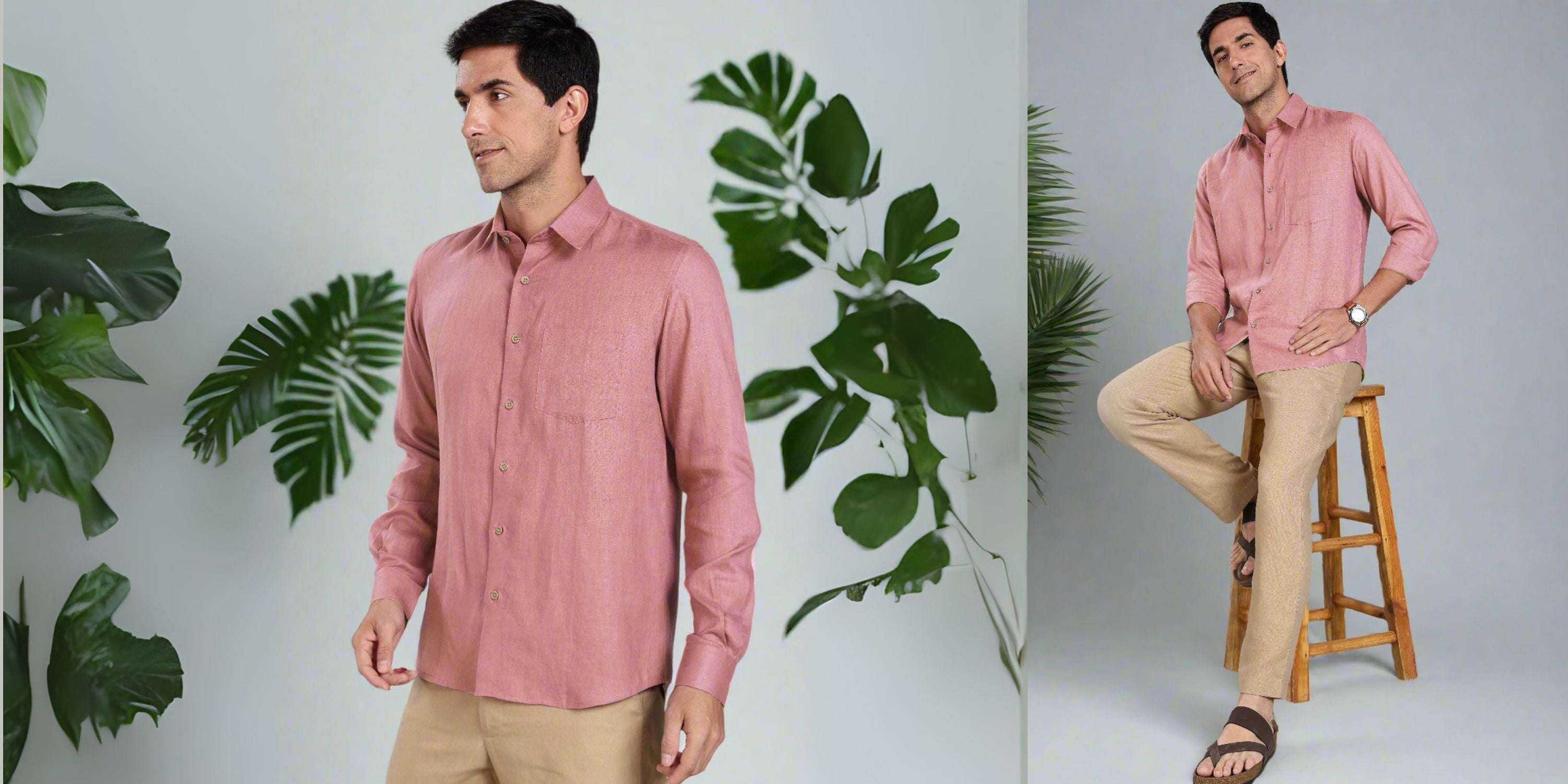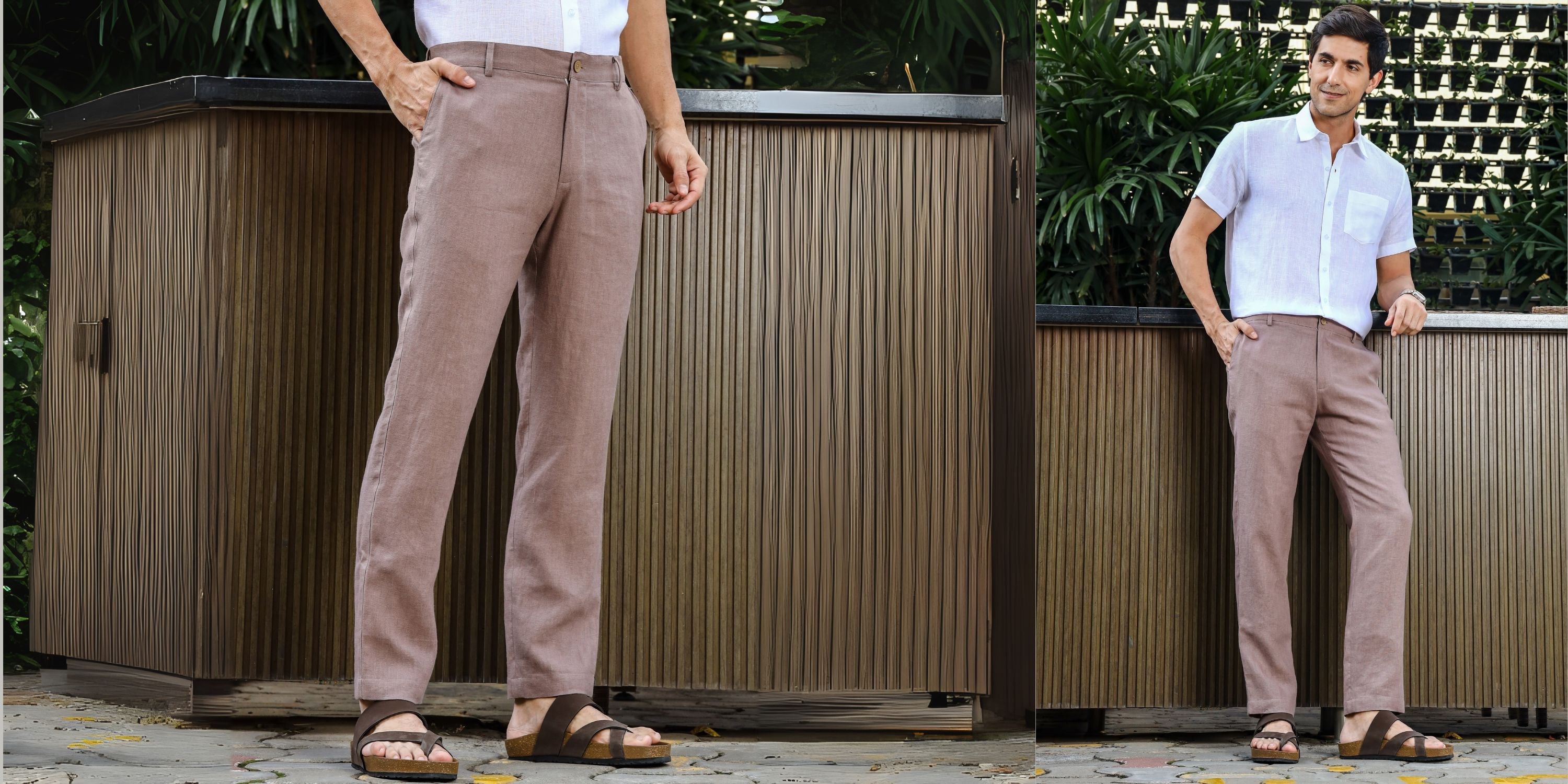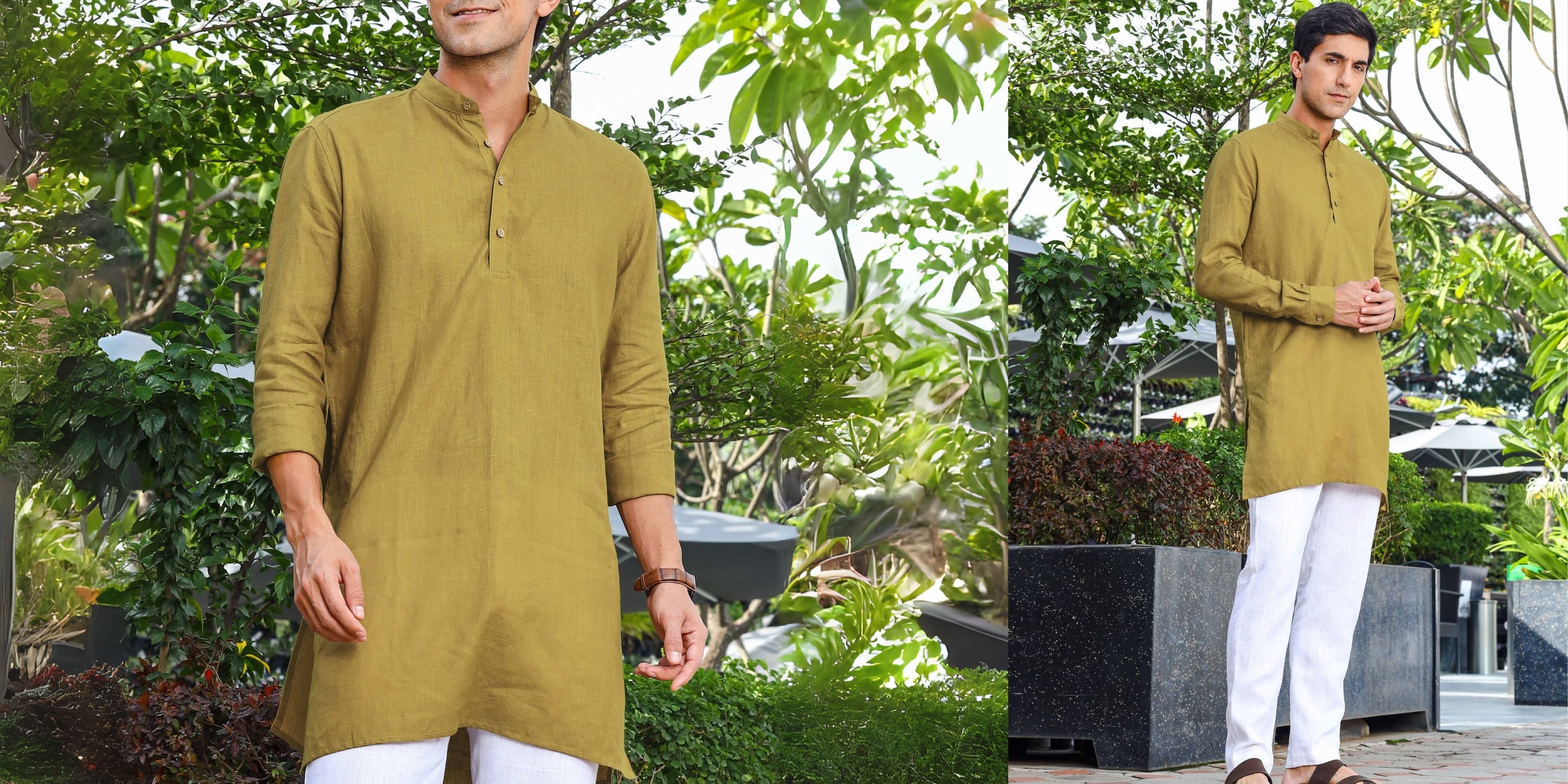Cotton Vs Linen – The Tale Of Two Fibres

They say that clothes maketh a man – but what is used to make those clothes makes a whole world of difference. The world of fashion and fabrics has evolved in the past several centuries, and today, should you go shopping, you will find yourself sifting through a huge range of materials. From natural to synthetic, the options are truly mind blowing, but before you get floored by the colour or design, there is some information that you should have.
While there is nothing seriously wrong with synthetic materials, there is nothing that can beat natural fabrics – denim, wool, cotton and linen are not only better for the planet, but also better for your body. In the past few years, there has been a serious effort to return to more natural and sustainable ways of living and choosing fabrics has also come into the spectrum.
So, when we start talking about natural fabrics and materials, two that tend to pop up constantly would have to be linen and cotton and although they might seem similar and have similar properties, they are actually quite different.
In this blog, we are going to attempt to enlighten you a little bit more about both the fabrics and why linen might just be the better choice for you.
Let’s start with the WHAT:
- Cotton is a fabric that is made from the cotton plant that has been around for several centuries; the balls from the cotton plants are harvested and spun into yarn, which is then transformed into threads. There are various types of cotton varieties and organic, Egyptian and Pima are the most popular and each of them have distinctive qualities and features.
There is no denying that cotton is recognised as a popular material for clothing, because it is soft and comfortable. But did you know that it is one of the thirstiest crops around? With the kind of groundwater depletion that is becoming rampant globally, this is not a crop that one should want to support. And then there is the fact that it needs plenty of chemicals to really grow and flourish. Because it is easy to mass produce, it is a cost-effective choice for many, but is it the best choice too? One has to wonder!
- If you are wondering if linen is a natural fiber, then yes, it is. As a matter of fact, this is one of the oldest fabrics in the world and was once considered the clothing of royalty! Linen comes from the flax plant (or sometimes the hemp plant), where the entire plant is pulled out and the seeds are removed by either ripping them out or by winnowing them. Once the long fibers are carefully retrieved, they are spun into the yarn that is actually used to create the final fabric. There are differences in the manner of which linen is woven and some of the most common methods include sheeting, plain and loosely. Linen clothing will generally have the sheeting method, because it offers a soft weave that has an almost untextured surface.
Should you compare cotton vs linen, you will notice that linen is a lot more durable; as a matter of fact, if you know how to take care of it, it can last you for many years! Like cotton, it can also absorb moisture, but it can also draw the heat, allowing your body to feel a lot cooler, while keeping you feeling wonderfully warm during the slightly colder months, making this a truly all-weather fabric. What makes this fabric incredible is that the more you wash it with care, the softer it will become and it is suitable for even those who have skin allergies, because good quality linen is hypoallergenic.
Now, we can move onto the differences between linen and cotton:
Even though both materials come from natural sources, they are not the same; there are actually several differences and these are some of the main ones.

|
Cotton |
Linen |
|
|
Texture |
Cotton is often soft to touch, but is prone to pilling. |
Linen tends to have a sturdier texture and although it might seem rough, it actually is not. |
|
Appearance |
You will get a smoother and softer appearance, but can wrinkle easily. It can also become soft and flat very quickly - how boring! |
Linen is more prone to creasing, but that adds to the charm. This fabric can give you that crisp and stiff look, when ironed properly. |
|
Breathability |
The level of breathability that cotton has depends on the weave – thicker weaves will not be as breathable as the thinner ones. |
Given that linen is made from hollow fibers, it is a lot more breathable and is very comfortable. Interestingly, linen can also help regulate temperature, which cotton is often not able to do. |
|
Absorbency |
Even though cotton is absorbent, water is not its best friend – the more you wash cotton, the more the fibers will disintegrate. |
Linen is highly absorbent and should you wash it properly, it will become softer and better with each wash. |
|
Warmth |
Cotton is not recognised for its insulation properties; so, while it might be a really good choice for the summers, not so much for the winters. |
The difference between cotton and linen is that linen is a more year-round fabric – it can keep you cool on hot days and warm on the cold ones. The porous nature of linen ensures that it can regulate temperature in all kinds of weathers. |
|
Durability |
Cotton can stretch and wrinkle less, which might make you think that this is the more durable fabric; but that is not true. |
Linen fibers are longer and wrapped more tightly, which means that linen is stronger, more durable and will probably last you a lifetime! |
|
Price |
One of the reasons why cotton is so popular is because it is so cost effective, but cheaper does not really translate into better, does it? |
Both cotton and linen are made from plants, but the process of making linen is a lot more labour intensive, which is why it is also more expensive. |
|
Allergy Control |
Cotton can cause allergies, because the short fibers can rub against the skin. |
Linen, on the other hand, is completely hypoallergenic, making it suitable for even people with extremely sensitive skin. It can even prevent the growth of some types of bacteria and disease-causing pathogens. |
You should choose to look at linen almost like a one-time investment – when you pick a linen shirt or a pair of trousers from Linen Trail, we suggest that you not look at the price tag. You look at how long you will be able to use the product – take good care of it and you might actually be able to hand it down to the next generation, feeling just as good, if not better!
Linen is not only the better choice, it is also the more sustainable choice – linen can flourish quite easily on its own, not requiring any chemical enhancers or even too much water. And although the initial cost might be more, it might be your first step towards slow and sustainable fashion – so every time you pick something at Linen Trail, you are doing your bit for the planet!









